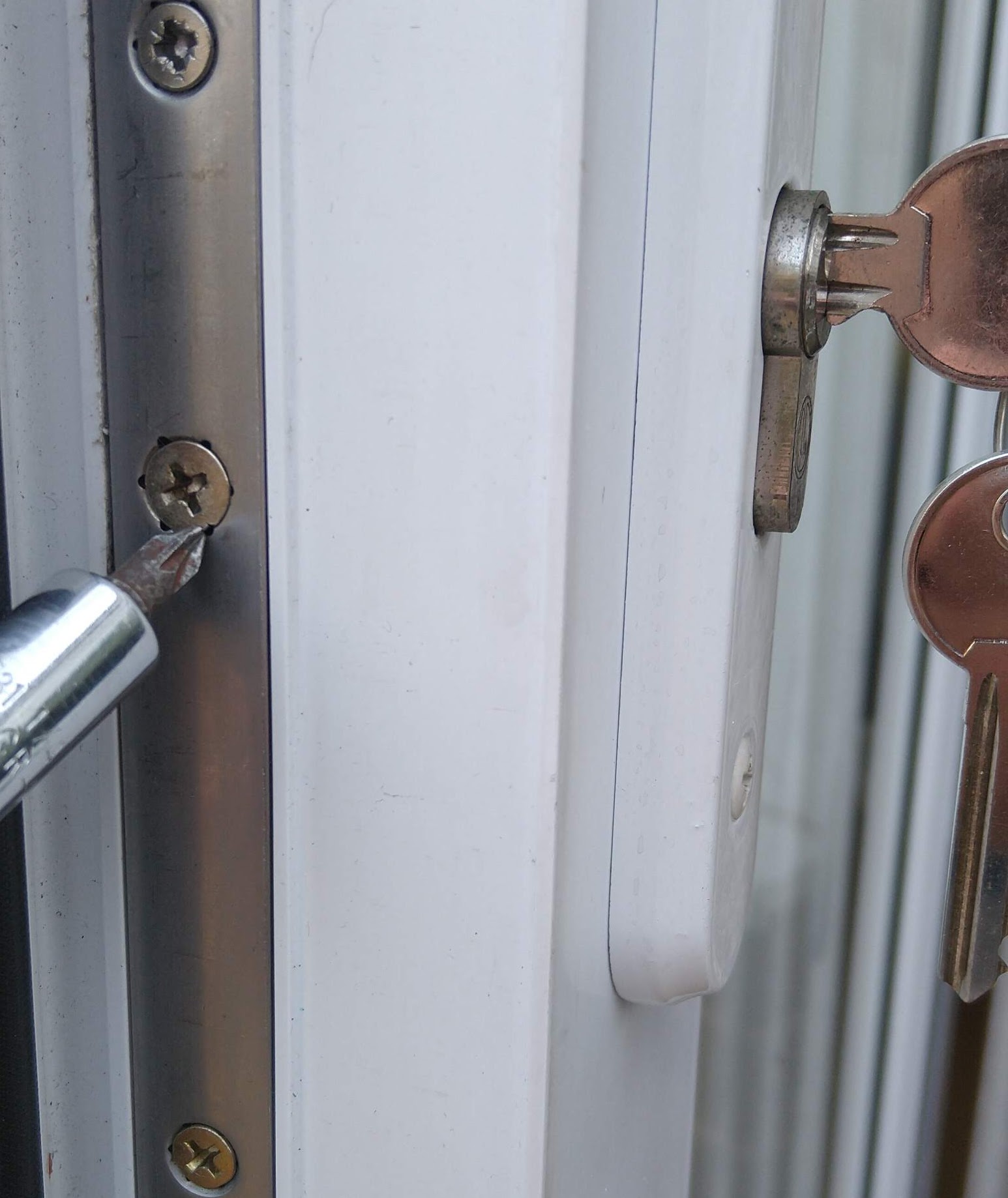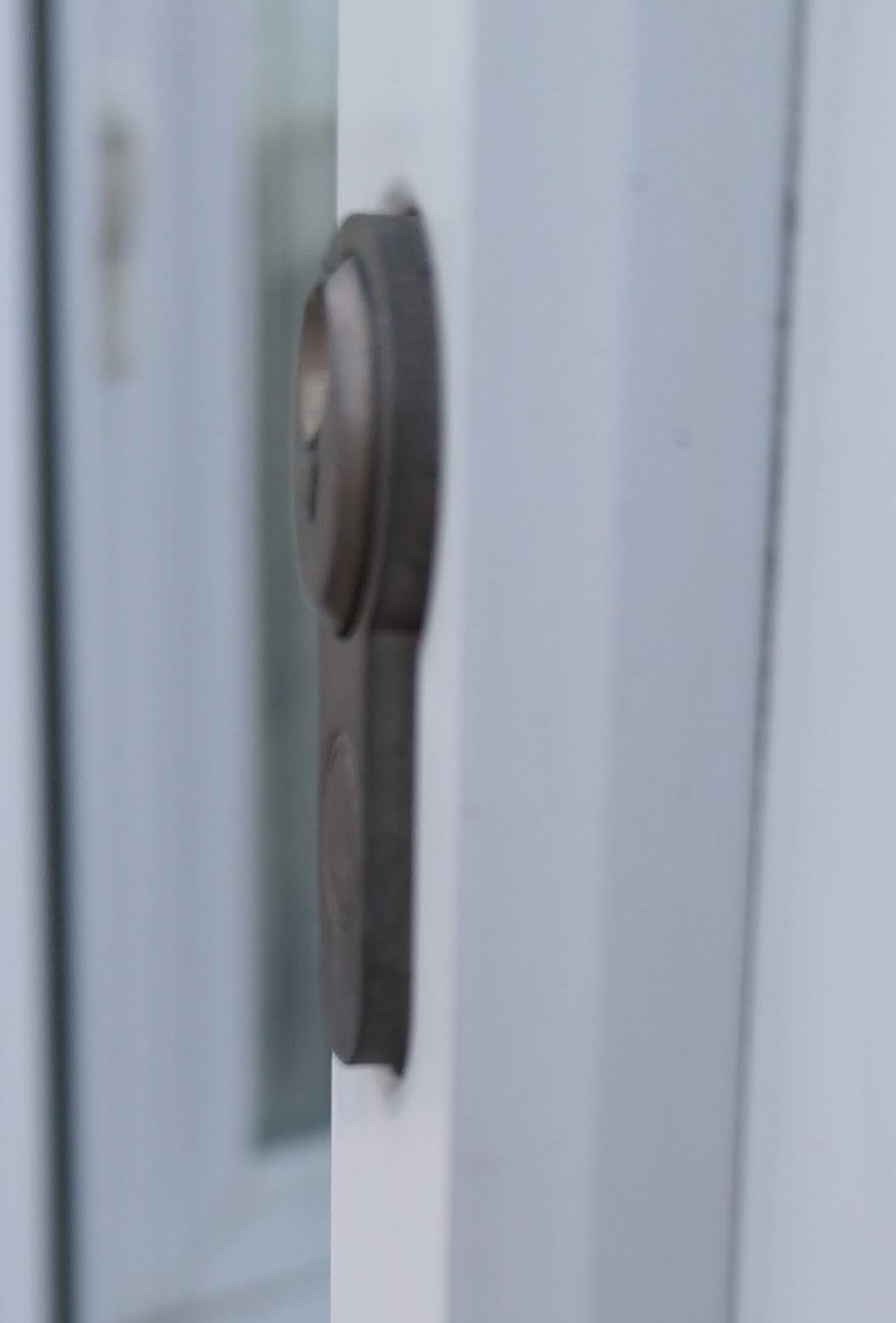Upgrading your UPVC door lock
As many of you are aware, there are a lot of reports about burglaries in the area where the criminals are snapping the locks in UPVC doors.
With this method they can be in your house in 10-15 seconds so don't leave anything valuable in easy reach of the door (purse, handbag and especially car keys) and also make sure you put your alarm on, if you have one, when you go to bed. The article above refers to anti-snap cylinders and if you can use a tape measure and a screwdriver you can upgrade your locks very easily.

First check the end of your current cylinder lock. If, like the one in the picture, it has a BS kite mark and 3 stars, then it is likely to already be an anti-snap lock. You can also get anti-snap locks that are not 3 star rated so you can remove the cylinder to check..

In order to remove the cylinder there is a screw in the edge of the door frame that lines up with the cylinder - if you remove this screw you can withdraw the cylinder. You will need to have the key in the lock because it needs to be turned slightly to line the latch up with the cylinder so it can be removed from the door. Leave the key in the cylinder so you know which is the inside of the door.


When you have the lock out, check if it has slots cut into it; if it does then you already have an anti-snap lock. Some have a single slot at each end, others have multiple slots. The one pictured below is an ERA Fortress which is 3 star rated. As well as the slots, it also has hardened steel pins to prevent the lock being drilled out. An anti-snap cylinder will cost around £15-£20 and a British Standard 3 star lock will cost around £40-£50.
If you want to replace the cylinder, you need to measure the distance from each face to the screw hole. In the one in the photos, you can see one side is 40mm and the other side is 47mm. The new lock sizes are in 5mm increments so this cylinder could be replaced by a 40/50 or a 40/45 cylinder. You want the face of the cylinder to be flush, or very slightly proud of the outside handle. If it sticks out too far, it gives the criminals something to grip onto but if it is inset from the handle, they can force a screwdriver in the gap to lever the handle off. In this case, the longer offset was on the inside of the door so I went for the 40/50 as that was in stock. If you look at the photo of the old lock alongside the ERA you can see from the weathering that the old cylinder was proud of the handle by around 6-7mm so I got a lock with a smaller offset for that door




Now you have the measurements, pop the lock back in the door, replace the screw and btain your replacement lock. You can order a new cylinder online or go to a locksmiths, DIY shop, Screwfix etc. When you have the new cylinder it's simply a case of removing the screw again, swap the cylinder, replace the screw and you have increased the security of your door. If you went for the BS 3 star cylinder then let your insurance company know - it might make a difference.
You can also get the cylinders "keyed-alike", ie the same key for multiple doors. This is particularly useful for French windows (double patio doors) so you don't have different keys for each door. You could get all the doors in your house keyed-alike so you only have one key. If you want them keyed-alike, you are likely to have to order them because locksmiths do not always hold stock of keyed-alike sets.
If you are replacing the cylinders in French windows, you will probably have to unscrew the centre post from the secondary door, replace the cylinder and then re-fit the post.
If you don't want to tackle the job yourself then most locksmiths will come out and replace them for you. It should be a very quick job and one that is worth carrying out.




